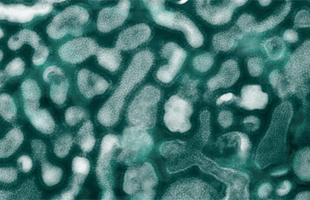Influenza strains are named after some exotic destinations but where do these names come from and what role does pathology play in fighting the flu?
According to figures from the Influenza Specialist Group* (ISG) there were over 100,000 laboratory confirmed cases of flu last year, which was an increase in laboratory diagnosis of almost fifty percent on the previous year, in part due to better testing.
Although flu isn’t life threatening for most people, ISG data shows it contributes to between 1,500 – 3,500 deaths a year, and vaccination is recommended for at risk groups. This includes people with underlying health conditions such as asthma or heart disease.
Pathology is the only way to diagnose flu, and this is particularly important as the symptoms are non-specific and mirror those of other conditions.
Influenza is a ‘notifiable disease’ meaning that diagnosed cases are recorded on the National Notifiable Diseases Surveillance System. The data is provided directly from the pathology laboratories that make the diagnosis.
Most people who contract the flu will get better at home but a minority of people will get sick enough to visit their doctor or even need admission to hospital.
Initial pathology testing is important to ensure that flu is the cause of symptoms. Further testing can also ascertain any secondary infection the patient may have, such as bacterial pneumonia or staphylococcus infection, which would require antibiotic treatment.
The flu virus is detected using a method known as Polymerase Chain Reaction (PCR) where the sample is processed in a thermocycler machine that makes lots of copies of the flu virus RNA (genetic make up) which is then examined.
Samples may also be sent for more detailed testing to isolate the specific type of flu virus. This information is sent from hospital laboratories to the World Health Organisation’s (WHO) reference centre located in Melbourne.
Although many flu cases will be diagnosed in hospitals, in some instances General Practitioners will also order flu tests, particularly if they are part of a surveillance network.
These surveillance networks help to monitor trends, including the instance of flu in the community and the severity of symptoms, by testing patients with flu-like symptoms.
As well as being provided to state and federal health departments this data will also be provided to the WHO.
The RNA of the flu virus mutates quickly and new strains can appear from year to year, which means that the flu vaccine must be reviewed each year to keep up with the virus and continue offering protection.
The data provided by Australian hospitals and GPs is combined with other global data and used by the WHO to help develop the vaccine for the following year.
Any new strains emerging will be catalogued and named. Flu viruses are categorised into A and B as they have different characteristics, for example influenza B strains do not circulate in animals.
New strains are usually named after the place where they appeared, hence this year’s quadrivalent (QIV) flu vaccine, protects against four strains of the flu;
- A/California
- A/Hong Kong
- B/Brisbane
- B/Phuket
Despite the exotic destination names, anyone catching one of these will most likely be staying in bed.
* http://www.isg.org.au/index.php/media/flu-fact-sheet/
Image of influenza under microscope: http://www.who.int/influenza/gisrs_laboratory/en/

